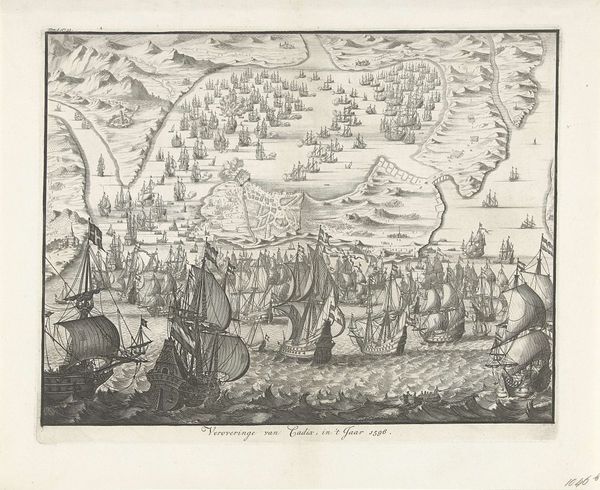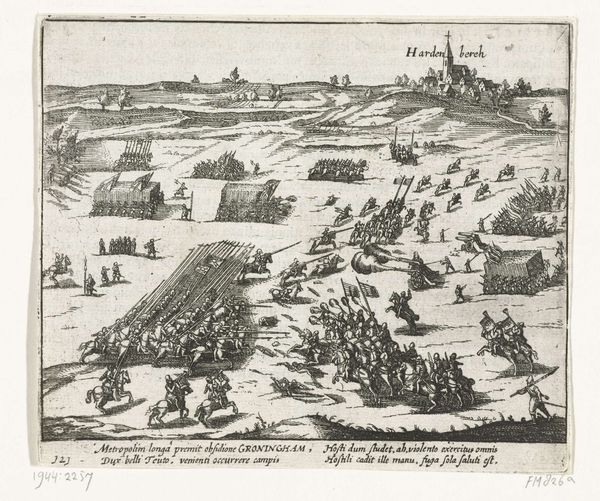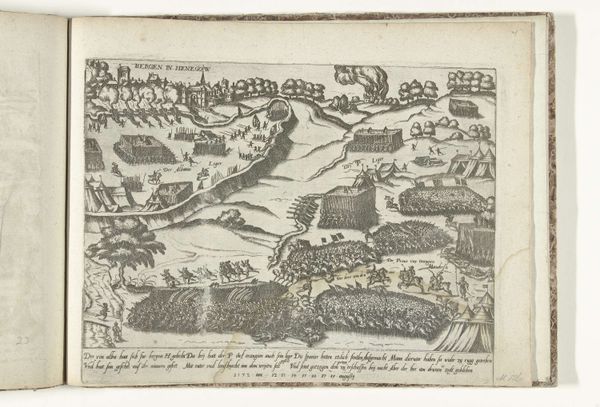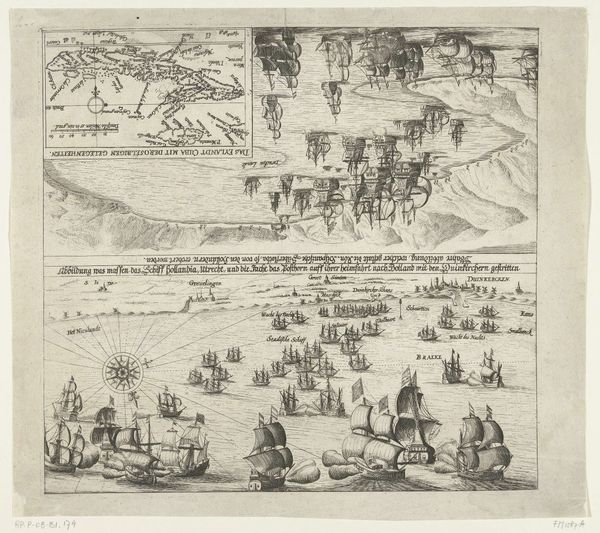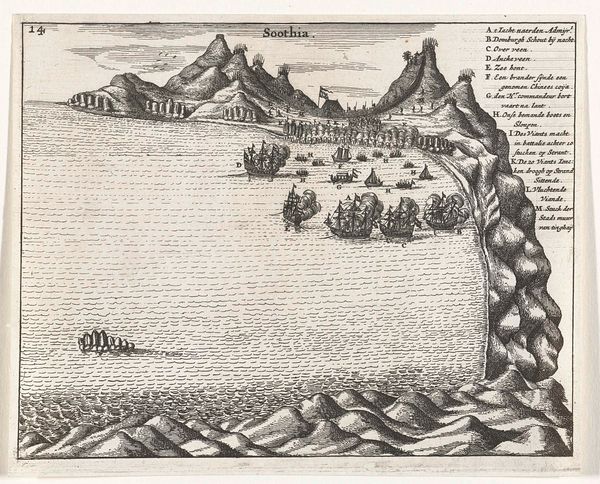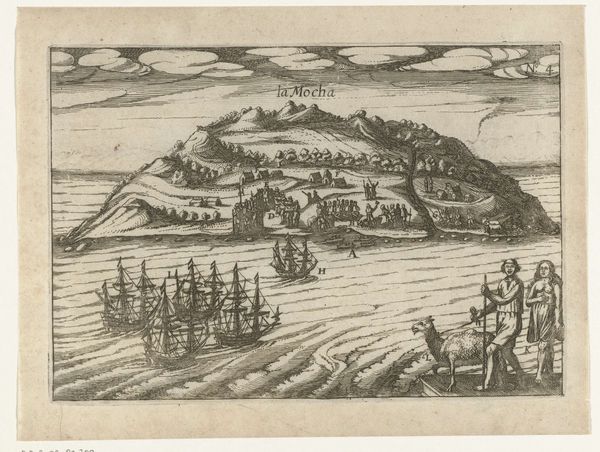
drawing, print, ink, engraving
#
drawing
#
baroque
#
pen drawing
#
mechanical pen drawing
# print
#
pen illustration
#
pen sketch
#
landscape
#
ink line art
#
ink
#
line
#
history-painting
#
engraving
Dimensions: height 145 mm, width 225 mm
Copyright: Rijks Museum: Open Domain
Editor: We’re looking at "Landing op het eiland Principe, 1598," made between 1601 and 1646 by Baptista van Doetechum. It’s a pen and ink engraving held at the Rijksmuseum. The stark black lines against the pale paper create a strangely unsettling feel. What story do you think this work is trying to tell? Curator: This print offers a potent glimpse into the history of Dutch colonial expansion. What initially strikes me is the depiction of the island not simply as a geographical location but as a site of active conquest and control. Look at the detail given to the European figures as they claim the land. Editor: It almost feels like a stage play with how deliberately figures are placed. Curator: Precisely. The “performance” of dominance was crucial to establishing colonial power. What does it mean to depict this “landing” – not as a messy reality – but a formalized event? Doesn’t this image invite viewers back in the Netherlands to imagine and even celebrate this claiming of land as some glorious act of adventure? Editor: So the print isn’t just documentation but active propaganda? Curator: Exactly! Prints like these were vital tools. Disseminated widely, they shaped public perception and legitimized imperial ambitions, effectively illustrating the relationship between art and the expansionist aims of the state. And look, consider that cross put deliberately in the frame behind the arriving sailors! Do you get some sort of message that the state AND the church is backing this 'landing'? Editor: Absolutely, the visual strategies in this engraving definitely point to the power dynamics at play during the Dutch Golden Age. Thank you for shedding light on that, it certainly enriches my view! Curator: My pleasure. Thinking about this helps understand that art does not happen in isolation but participates in cultural discourses.
Comments
No comments
Be the first to comment and join the conversation on the ultimate creative platform.

